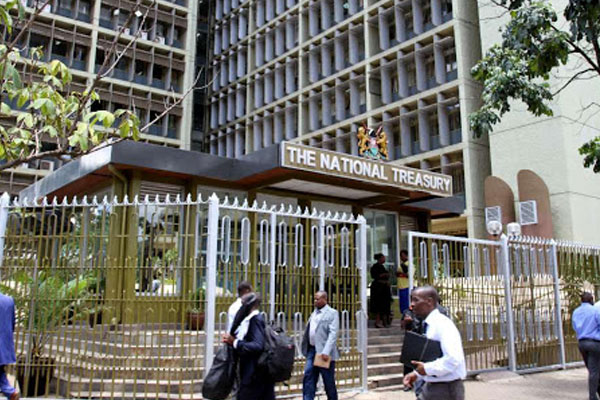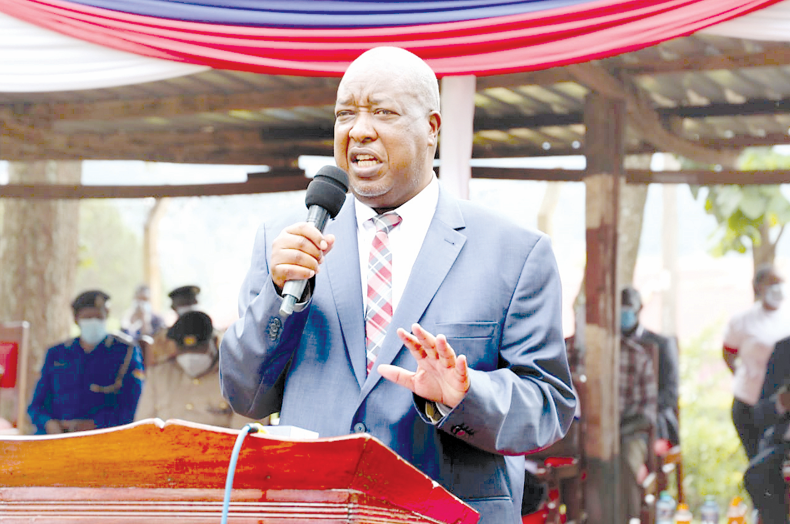Kenya faces massive rise in public debt in corona crisis

Seth Onyango @SethManex
Kenya’s public debt is expected to soar on the back of a steep economic downturn and massive coronavirus rescue spending, which will spur government’s appetite for external loans amid requests for waivers.
The Economic Survey 2020 released yesterday shows the national government expenditure is expected to grow by 10.6 per cent to Sh256.1 billion in financial year 2019/20 from Sh2.94 trillion spent in 2018/19.
Notably, the total stock of public debt stood at Sh5.3 trillion as at the end of June 2019, with external debt accounting for 57 per cent of the total debt stock.
Currently, the national debt stands at some Sh6.05 trillion with a total of Sh640.8 billion expected to be spent on public debt servicing in the current fiscal year.
Debt relief
Kenya and other countries is, however, pushing for debt relief following the economic shock from the coronavirus pandemic in a continental push driven by the African Union.
National Treasury says it is not only targeting a waiver of debt payment by bilateral lenders but also multilateral ones such as the World Bank, International Monetary Fund and African Development Bank.
A leading American credit rating agency, Fitch Ratings Inc. says economic crisis triggered by the virus is expected to halt Kenya’s fiscal consolidation and increase the country’s financing needs.
Fitch warns that the national debt will skyrocket unless the state cuts spending and appeals for more external grants.
Its projections show that general national debt will continue to rise through 2022 to reach about 70 per cent of Gross Domestic Product (GDP).
This is higher than its pre-coronavirus forecasts, which saw debt peaking at 65 per cent of GDP.
“With local Treasury auctions being typically under-subscribed, Kenya may have to rely on foreign borrowing, pushing up its external debt levels-already higher compared with ‘B’ rated peers,” their projections read in part.
Fitch affirmed Kenya’s ‘B+’ rating in December 2019 in part due to the country’s strong and stable growth outlook.
However, failure to stabilise government debt/GDP levels or a widening of the current account caused by falling export receipts or remittance inflows could lead to a negative rating action.
It comes as the government raids the international credit market for cash to contain the raging economic fallout from Covid-19 which has devastated businesses and livelihoods.
At the same time, Kenya Revenue Authority (KRA) is recording suboptimal revenue collections as the escalating contagion keeps people from stores, schools and workplaces.
This means the National Treasury will struggle to offload loans, leading to pile up thus further pushing the country to the brink of default.
World Bank
“We expect the government to access the IMF’s Rapid Credit Facility, which would provide up to $450 million (about 2 per cent of government revenue) in concessional financing,” the rating agency says.
It also believes that the country will conclude a larger IMF support programme, although the shock still entails an increase in risks to Kenya’s fiscal and external positions.
Fitch also forecasts Kenya’s economy to grow by 3 per cent in 2020, down from an estimated 5.6 per cent in 2019, and by 4 per cent in 2021.
International travel to Kenya and tourism, which the World Bank estimates contributes 14 per cent to the GDP, will fall to near zero for several months.
Kenya’s export sector, on the other hand, including horticulture and tea (40 per cent of exports), will be affected by travel restrictions, border closings and falling Eurozone demand.
Central Bank of Kenya (CBK) has responded by cutting the main policy rate by 100 basis points to 7.25 per cent lowered its cash reserve ratio (CRR) by 100 basis points to 4.25 percent to release liquidity so banks can boost their lending.
CBK also says it would ensure the interbank market and liquidity management continues to function smoothly.
It also requires commercial banks to provide loan relief, and to restructure loans to retail and corporate customers.
Meanwhile, global shock from Covid-19 will also stress Kenya’s external balances.
Tourism receipts and remittance flows were an estimated $3.6 billion in 2019 (3.7 per cent of GDP compared with a current account deficit of 4.2 per cent of GDP).
Oil importer
Fitch says Kenya’s status as an oil importer will mitigate the external stress due to the fall in oil prices, adding that import compression will keep the widening of the current account to between 5 per cent and 6 per cent of GDP in 2020.
“Kenya’s flexible exchange rate will limit the drawdown of international reserves,” reads the Fitch report in part.
Last month, the World Bank Group and the International Monetary Fund issued a joint statement to bilateral creditors requesting debt relief for the poorest countries.
The financial institutions called on G20 to suspend debt payments from IDA countries that request forbearance.
The joint statement says that the coronavirus outbreak may have serious economic and social ramifications for these countries. IDA is one of the largest sources of assistance for the world’s 76 poorest countries.
Kenya is among countries eligible to receive IDA resources thus may be relieved from debt repayment should it request forbearance.
The IMF and World Ban argue that delaying debt repayments will help with immediate liquidity needs to tackle the Covid-19 impact and allow time to assess the financing needs in these countries.















